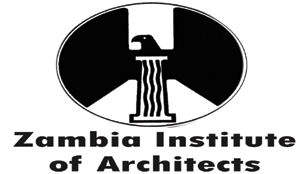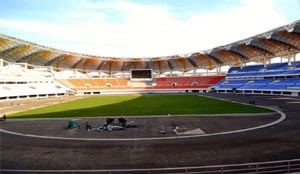 By Dixon Bwalya –
By Dixon Bwalya –
Experience is defined as skill or knowledge gained through actual observation of facts or events, activity or practice in doing something.
The TIMES OF ZAMBIA on Friday February 7, 2014 carried a story on the sports page where the Minister of Works and Supply was quoted as having said that the Heroes National Stadium in Lusaka was now expected to be commissioned sometime in October 2014.
According to the story the Minister was quoted as having noticed some “errors” in the construction of this stadium which included the following:
The newly constructed stadium had already developed cracks at Gate one where tickets will be sold as well as in the staircases leading to terraces.
Access roads leading to the stadium had not yet been done.
Fire points have been located such that they are not easily accessible in case fire.
Instructions on fire extinguishers were written in Chinese which would make it difficult for Zambians to operate (probably a result of a misunderstanding of the new government policy of introducing local languages in schools).
No training pitch and facilities for track and field events have been included in the design of this new stadium.
Issues raised on means allowed in the design for cleaning of the roof since the roof was now dirty. (Issues of the roof have been raised before including ability to withstand solar radiation.)
Assurance was given that there would be no congestion during matches. (A statistical answer would have been more convincing than a mere assurance.)
An architectural critique of the Levy Mwanawasa Stadium was carried under this column and similar concerns were raised which seem to have been repeated on the Heroes National Stadium.
The practice in acquiring architectural services is that the client or the promoter of the project to be constructed will state exactly what is to be accommodated in the project to be constructed.
Most clients seem not to take this phase of the building process very seriously and yet this is the bench mark of what is to follow because an ill-defined projects may result in unsatisfactory solutions or indeed abortive work.
Once the brief of accommodation requirements have been defined the architect and other consultants will translate this brief of requirements into a three dimension preliminary design solution which is submitted to the client for his approval.
Again this is another phase of the construction process which most client do not seem to consider important as a result persons who are ill-versed in the technicalities of construction are often given the task of approving the preliminary design solution or this phase is omitted altogether.
Once the preliminary design solution has been approved the architect and his support consultants will proceed to prepare final construction drawings which are mainly construction instructions for the contractor to follow during the construction phase.
Any major changes made at this stage may not only be costly but may delay the project and probably lead to abortive works.
In the last and final phase which is the actual construction of the project based on the approved tender documents the key lies in ensuring that the contractor follows what has been designed and specified and adheres to the provisions of the signed building contract, if there changes to be made this should to the approval of the consultants and sometimes the client as well.
If this process is followed and given the seriousness each phase deserves probably what happened at the Levy Mwanawasa Stadium and is now being repeated at the Heroes National Stadium would have been avoided or kept to a minimum.
During the colonial days and also during Dr Kaunda’s time all government building projects were handled by Buildings Department under the Ministry of Works and Supply.
Buildings Department was the only government department equipped with both technical personnel and equipment necessary in executing this responsibility, where for some reason the project was sub-contracted to either the private sector or indeed any other organ a process was put in place for Buildings Department to be the technical overseer of the project while the end-user Ministry or Department had a say in terms of defining what was required. The technical aspect of the project was under the control of Buildings Department.
Projects concerning construction of roads fell under the Roads Department while the Roads Department has moved on to a different model of meeting relevant challenges.
At Buildings Department and especially during the second republic the scenario changed instead of projects being handled by the technically equipped Buildings Department at the Ministry of Works and Supply, a number of ministries set up their own “little buildings departments” sometimes with only skeleton or no technical staff to speak of some of whom could not tell the difference between an expansion joint and a construction joint; there is more to those so-called “diagrams” than some think.
The “errors” pointed out by the Minister of Works and Supply in the construction of the Heroes National Stadium in Lusaka which have now delayed the commissioning of the stadium may wholly or partially be a result of deviating from the above process in the delivery of this particular project.
The cracks that have been noticed could be a result of either inadequate design if the contractor strictly followed what was designed and specified by the consultants or may have happened because of poor workmanship.
Whichever the case this could have been rectified as soon as the cracks were noticed during the construction period and did not have to wait till commissioning time.
If the access roads to the stadium have not yet been done and yet the contractor is ready to hand over the project it could probably mean the roads were not in the original scope of works and may have been included as an afterthought.
If on the other hand the construction of the roads was to be carried out by other contractors other than the contractor constructing the stadium meaning a separate contract would be in place.
Accessibility of fire points in case of fire would be a major consideration at the design stage of this functional element and if indeed this was the case then the current arrangement would have received approval by the client at preliminary design stage prior to commencement of the construction phase unless of course the above outlined process was not followed or the approval was given by someone who did not take his assignment seriously.
The type and make of equipment and fittings to be part of a building project are specified well in advance, this also enables the contractors to quote for the same and particular fitting because there is a variety of sanitary fittings as well as fire extinguishers on the market.
The installation of fire extinguishers with operation instructions written in Mandarin could only meant this may have been what was specified and the contractors was merely following instructions in the tender specifications.
If a detailed brief of design requirements had been prepared for the Heroes National Stadium to include a training pitch as well as facilities for track and field events and preliminary design were approved by the client as part of the original scope of works then this particular “error” may not have arisen to delay the commissioning of this new stadium.
The current state of things as pointed out by the Minister of Works and Supply could only mean something went amiss right from conception stage, unless of course, something has been missed out.
The issue of congestion during football games is yet to be resolved at the Levy Mwanawasa Stadium and since the Heroes National Stadium is being constructed after the Levy Mwanawasa Stadium one would have thought that experience gained then would have come into play during the construction of the Heroes National Stadium, the fact that the minister sought assurance may be signs of uncertainty on this design consideration.
As stated above issues to do with the roof on this new stadium in Lusaka have arisen before and the fact that this matter is being again late in the construction stage means this matter has not been resolved and the government may ultimately be forced to accept the new stadium with unresolved problems accompanied by high maintenance costs.
Yet this is a design consideration that should have been addressed and resolved at preliminary design stage before giving the go-ahead to the next phase of the construction process.
From what has been going on it appears like the “Kabusha” syndrome still lingers on where non-technical people, for whatever reason, volunteer to go and purchase technical goods and services.
These are part of the consequences of this popular syndrome; delays of projects and increased costs.
For comments: 0955 789960







